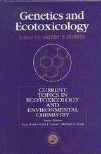Papers in the Biological Sciences

Valery Forbes Publications
Document Type
Article
Date of this Version
2001
Abstract
Most natural populations experience some density dependence, and longterm average rates of population growth are likely to be close to zero (i.e., steady state). An essential question, therefore, is how and to what extent do density-dependent effects influence the responses of populations to toxicant impacts? Here we consider three general types of interaction between density dependence and toxicant effects: additive, less than additive, and more than additive. If we know enough about the life-history dynamics of an organism and how its life-history traits are affected by density and toxicant exposure, we should be able to use life-history models to predict responses of populations living under density-dependent control to chemical exposure. However, because the number of factors influencing the outcome is large, we demonstrate that simple, general, a priori predictions are not feasible. A review of the literature confirms that a variety of interactions has been observed in experimental systems. It is essential that experiments are designed so that the interactions of interest can be determined. We review these critically. Experimental designs that are appropriate for exploring density–toxicant interactions on individual physiological performance may be unable to detect potential compensatory interactions at the population level. Designs most likely to simulate the dynamics of field populations will be unable to determine the mechanistic bases underlying population-level impacts. To facilitate an ecologically correct interpretation of density–toxicant interactions, it is therefore essential that the limitations of the chosen experimental designs be recognized and made explicit.


Comments
Published in Ecological Applications, 11(4), 2001, pp. 1249–1257. Copyright 2001 by the Ecological Society of America. Used by permission.